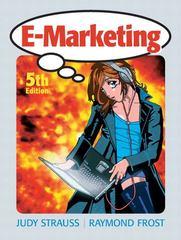


:Please answer all questions.
Sara buys fruits (f) and chocolate (c). She always buys one basket of fruits with 2 bars of chocolate. It costs $2 for each basket of fruit and each bar of chocolate. Sara has $24 to spend on these two goods. Consider a price drop in chocolate to $1 per bar.
a) What kind of preference does Sara have? Illustrate the shape of her indifference curve (fruits measured on y-axis).
b) Find her optimal consumption bundle before and after the price change and write her budget constraint before and after the price change.
c) Calculate the substitution effect and the income effect of the price change in Sara's demand of chocolate.
d) Derive her demand functions for fruits and chocolate.
EC 2 1. Intertemporal Trade and the Current Account Answer all parts (a) - (d) of this question. Consider a two-period model of a small open economy with an endowment (31, yz) of an internationally tradable good in periods one and two, respectively. The economy can borrow and lend on international financial markets at the gross interest rate 1 + r. The economy's representative agent has preferences over consumption (C1, C2) in the two periods as represented by the utility function, U(C1, C2) = + where B E (0, 1) and o > 0. There are no initial assets. (a) [8 marks] What is the intertemporal budget constraint facing the economy's rep- resentative agent? Provide a short economic interpretation. (b) [10 marks] Derive the Euler equation associated with the representative agent's maximization problem. (c) [16 marks] Use the Euler equation and the intertemporal budget constraint to derive the optimal level of consumption in period 1 (expressed as a function of y1, y2 and r). What is the economy's current account position in period 1? (d) [16 marks] Analyze graphically how an increase in the real interest rate affects the optimal level of consumption in period 1 and the current account position in period 1. Explain carefully how this effect depends on the economy's initial (that is, before the interest rate change) current account position in period 1.6. (10) Consider the standard growth model in discrete time. There is a large number of identical households (normalized to 1). Each household wants to maximize life-time discounted utility V(tale.) = >#'(Ing + yla-1), 920, that is, households preferences are characterized by "habit persistence". Each household has an initial capital stock ro at time 0, and one unit of productive time in each period, that can be devoted to work. Final output is produced using capital and labor services, yt = F(ht, m) = kin)-. This technology is owned by firms whose number will be determined in equilibrium. Output can be consumed (c) or invested (4). We assume that households own the capital stock (so they make the investment decision) and rent out capital services to the firms. We also assume that the capital stock (If) fully depreciates at the end of a given period, i.e. 5 = 1. Finally, it is assumed that households own the firms, i.e. they are claimants to the firms' profits. (a) In this economy, why is it a good idea to describe the AD equilibrium capital stock allocation by solving the (easier) Social Planner's Problem? (b) Fully characterize (i.e. find a closed form solution for) the equilibrium allocation of the capital stock. (Hint: Derive the Euler equation, and "guess and verify" a policy rule of the form kit = ght, where g is an unknown to be determined.) (c) What is the capital stock equal to as t - co? What is the ADE value of the rental rate of capital and the rental rate of labor as t - co? (d) Express the ADE price of the consumption good in any period T as a function of parameters of the model and the sequence of capital stock up to period T.Assume that you have 100 shares of ABC stock which has a volatility of 25% and a current stock price of f40 per share. ABC pays no dividends. The risk-free interest rate is 4%. 1) Use the Black-Scholes option pricing model to value a one-year, at-the- money call option on ABC stock with the information as specified above. 2) What would be the value of an European put option on the same share with the same exercise price and expiry date as for the call? 3) Given the information above, what action should you take to hedge using call options? What would be the total value of the transaction? Discuss the difficulties you would encounter in maintaining a perfectly hedged portfolio using only options












